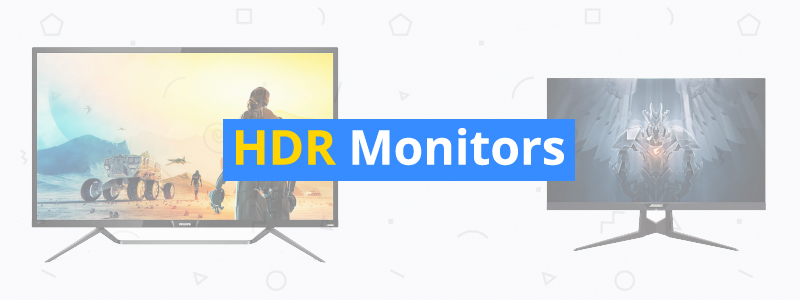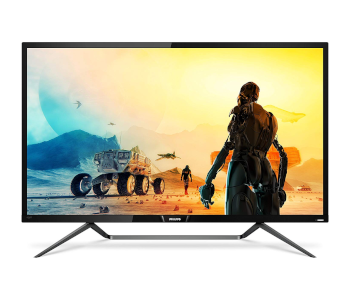5 Best HDR Monitors of 2019
Simply put, high dynamic range (HDR) is a technology that allows for more vibrant and more realistic images, with a wider range of colors, increased brightness, and better contrast. It lets you see more detail in movies and video games, especially in very dark and very bright scenes.
HDR is well implemented in TVs, but the same thing can’t be said for monitors. There are many monitors that can accept an HDR signal but don’t have the right hardware to properly display HDR content. This makes shopping for the best HDR monitors a difficult task. But the good news is that we already got you covered.
In this guide, we have compiled the top HDR monitors on the market, from a 43-inch 4K monitor to a couple of 1440p monitors with outstanding gaming performance. All monitors listed here are certified VESA DisplayHDR monitors, with two of the products featuring a DisplayHDR 1000 certification, which is the highest level.
| Budget |
|---|
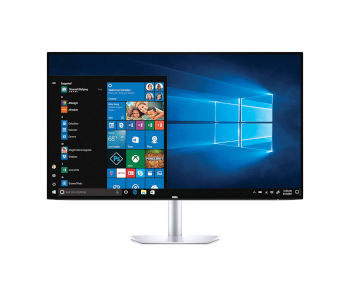 |
| Dell S2719DM |
| 3.7/5.0 |
| Size: 27 in |
| Resolution: 2560 x 1440 |
| It has a great sRGB color space coverage. |
| Check Amazon |
| Best Value |
|---|
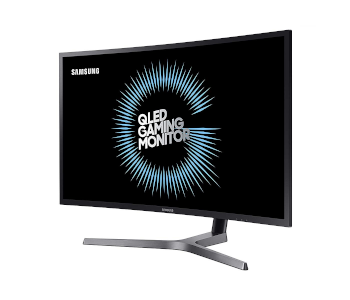 |
| Samsung C32HG70 |
| 4.1/5.0 |
| Size: 32 in |
| Resolution: 2560 x 1440 |
| Has a wide color gamut support and AMD FreeSync support. |
| Check Amazon |
| Top Pick |
|---|
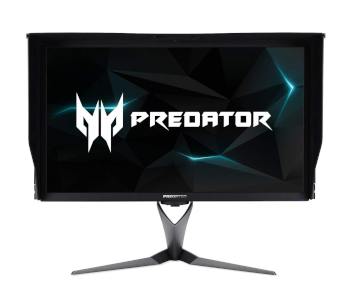 |
| Acer Predator X27 |
| 4.6/5.0 |
| Size: 27 in |
| Resolution: 3840 x 2160 |
| It has an excellent peak brightness in HDR mode. |
| Check Amazon |
VESA DisplayHDR Classifications
As mentioned, there are a lot of monitors on the market that support HDR input (usually in HDR10 format) but can’t actually display HDR content properly. The easiest way to check the legitimacy of monitors is to check whether they meet the HDR standards set by the Video Electronics Standards Association (VESA), which was created in collaboration with more than 20 companies – including popular names in the monitor market such as Asus, Samsung, and Dell.
Announced in 2017, the VESA DisplayHDR standard has four levels for LCD monitors: DisplayHDR 400, DisplayHDR 500, DisplayHDR 600, and DisplayHDR 1000. DisplayHDR 400 is the most basic, only requiring a monitor to have an 8-bit panel (16.7 million colors) and a peak brightness of 400 nits, with no wide color gamut support – all of which are easily attainable. Many HDR monitors on the market fall in the DisplayHDR 400 category.
DisplayHDR 500, DisplayHDR 600, and DisplayHDR 1000 are similar in that they require wide color gamut support (at least 90 percent DCI-P3 coverage) and a 10-bit panel (1.07 billion colors), with the peak brightness requirement being the most notable difference between them. Local dimming – which is a monitor’s ability to dim certain areas of the screen while keeping the other areas bright, therefore improving contrast – is also required for these three VESA HDR classifications.
While some will say that monitors that meet the DisplayHDR 1000 criteria are the only “true” HDR monitors and are the only ones worth getting, many people are perfectly fine with the performance of monitors under the lower categories. In addition, not everyone can afford DisplayHDR 1000 monitors, which are very expensive.
If you can afford to buy DisplayHDR 1000 monitors such as the Acer Predator X27 and the Asus ROG Swift PG27UQ, go for it. If not, then consider getting a DisplayHDR 400/500/600 monitor instead. In this guide, we have included monitors under different HDR levels, so that if our top pick is way out of your budget, you’ll have other options to choose from.
HDR Monitors Comparison Table
| Make and Model | Rating | Size | Resolution | Refresh Rate | Panel Type | VESA HDR Level | Weight | Price |
|---|---|---|---|---|---|---|---|---|
| Acer Predator X27 | 4.6 | 27 in | 3840 x 2160 | 120 Hz | IPS | HDR 1000 | 27.1 lb | Check Price |
| Dell S2719DM | 3.7 | 27 in | 2560 x 1440 | 60 Hz | IPS | HDR 400 | 17.5 lb | Check Price |
| Samsung C32HG70 | 4.1 | 32 in | 2560 x 1440 | 144 Hz | VA | HDR 600 | 21.2 lb | Check Price |
| Gigabyte Aorus AD27QD | 4.0 | 27 in | 2560 x 1440 | 144 Hz | IPS | HDR 400 | 17.6 lb | Check Price |
| Philips Momentum 436M6VBPAB | 4.3 | 43 in | 3840 x 2160 | 60 Hz | VA | HDR 1000 | 32.4 lb | Check Price |
1. Best Pick: Acer Predator X27
Editor’s Rating: 4.6/5
If money is not an issue for you, the Acer Predator X27 is the best HDR monitor that you can get right now, especially if you want an all-around monitor that works great for gaming, productivity, and general use. It sells for around $1,800, easily making it the most expensive product on this list, but compared to all the other monitors here, it’s the most complete.
Design
The X27 is a 27-inch IPS display with a 4K UHD resolution, a 120 Hz standard refresh rate, and a 16:9 aspect ratio. It comes with a set of blinders for glare reduction and has a thick chassis with narrow bezels at the top and sides. The back panel isn’t over the top like with some gaming monitors on the market, with none of those attention-grabbing features such as a customizable lighting system.
Like most LG monitors, this Acer display has a small joystick for menu navigation, located on the bottom-left corner of the back panel, together with a set of physical buttons. The joystick is easy to use and allows for faster menu navigation, though accessing it from the front while the blinders are attached can be a little difficult. Featuring an organized layout and good selection of options, the on-screen display is also well implemented.
Connectivity
For input, this Acer 4K monitor has one HDMI port and one DisplayPort – the standard inputs for almost all G-Sync monitors. All input ports are down-facing on the bottom area of the back panel, along with the analog audio out port. In addition, the monitor features a USB hub composed for four USB 3.0 down ports, which are separated into two sets: one set is outward-facing on the back panel while the other is on the monitor’s left side for quick access. Furthermore, one of the side-mounted USB ports supports fast charging, which is convenient.
Stand
The stand is well-built and easily supports the monitor, featuring a stylish design with wide feet, a top handle, and basic cable management. Regarding ergonomics, the X27 is inferior compared to most Dell UltraSharp monitors, but not by a wide margin. It offers height adjustment and tilt and swivel options, with decent ranges. If you want a more flexible setup, you can mount the monitor to a wall mount or monitor arm using the supplied VESA mount adapter.
Performance
The X27 is an outstanding all-around monitor, featuring wide viewing angles, a good brightness rating in standard mode, and near-perfect coverage for both sRGB and Adobe RGB color spaces once properly calibrated. You can use it for productivity, with the large screen and high resolution allowing for sharper texts, more detailed images, and easier multitasking. It’s great for photo/video editing, web development, coding, content writing, and processing spreadsheets, among others.
Unsurprisingly, this Acer product shines the most when used for gaming. It has a fast response time and a good input lag and features G-Sync support for screen-tear-free gaming, especially when playing graphically intensive games such as The Witcher 3: Wild Hunt and Final Fantasy XV. The standard refresh rate, as mentioned earlier, is 120 Hz, but if that’s still not enough for you, the monitor can be easily overclocked to 144 Hz.
HDR Quality
The X27 has good HDR performance, featuring wide color gamut support and an extremely high peak brightness in HDR mode. While the contrast is not on par with VA monitors, the monitor is great for HDR content, capable of producing remarkably vivid and colorful images. It’s a certified DisplayHDR 1000 monitor, the highest level in the VESA standard for HDR monitors.
Moreover, it’s also one of the few officially certified G-Sync Ultimate monitors – which are basically more premium, more expensive G-Sync monitors with HDR – currently out. If you love to play games with pretty visuals, you’ll love gaming in HDR on this monitor.
Verdict
Overall, the X27 is a fantastic monitor for all-around use, featuring excellent gaming performance and great picture quality, with good HDR performance, superb color accuracy, and wide viewing angles. It has a good build quality and features built-in speakers and an intuitive menu control scheme. If you can afford to spend $2,000 on the best HDR monitors, the X27 is the best option.
If, however, you prefer a gaming monitor with a significantly more stylish design, check out the similarly priced Asus ROG Swift PG27UQ instead. Regarding performance, the X27 and the PG27UQ are not that different from each other, which isn’t really surprising considering they use the same panel.
| Tech Specs |
|---|
| Size: 27 in |
| Resolution: 3840 x 2160 |
| Refresh Rate: 120 Hz |
| Panel: IPS |
| HDR Level: HDR 1000 |
| Weight: 27.1 lb |
| The Pros |
|---|
| Superb color accuracy |
| Great viewing angles |
| Wide color gamut support |
| Excellent peak brightness in HDR mode |
| Nvidia G-Sync support |
| High native refresh rate |
| Fast response time |
| The Cons |
|---|
| Extremely expensive |
| Subpar contrast ratio |
2. Best Budget: Dell S2719DM
Editor’s Rating: 3.7/5
The Dell S2719DM is a 27-inch monitor that offers entry-level HDR support. In other words, it’s not on par with our top pick. The good news is that it sells for a significantly lower price, normally selling for just around $350. If you want a budget-friendly HDR monitor with good picture quality and decent gaming performance, get this product.
Design
Compared to the Acer Predator X27, this Dell IPS monitor is more stylish, featuring an ultra-thin chassis with thin bezels all around. The screen has an anti-glare coating, which helps when using the monitor in a bright environment, while the back panel has a silver finish.
The S2719DM is more minimalist than Dell UltraSharp monitors and will look great next to Dell XPS laptops and Apple computers. The controls come in the form of clickable buttons, located on the bottom-right corner of the monitor, on the underside – the standard setup for Dell monitors. While not as intuitive as the joystick control scheme seen in LG monitors, the buttons are easy to use. The on-screen display is also well implemented, featuring a good selection of options.
Connectivity
Unlike Dell UltraSharp monitors, the S2719DM has a short list of connection options, which might disappoint some of you. It has a pair of HDMI ports and one audio out, all of which are outward-facing on the back panel, in a vertical position. That’s it. There is no DisplayPort, which is uncommon for monitors selling for more than $300. In addition, there is no USB hub on this monitor. For basic cable management, there is a small hole integrated into the stand.
Stand
The stand is sturdy, featuring a simple flat base where you can place small belongings such as your mobile phone. You can also fit a compact soundbar under the monitor if you want external speakers for audio but prefer a minimalist setup. Sadly, the stand has limited ergonomics, only offering a tilt option with a 21-degree backward tilt.
If you want to mount the monitor to a flexible monitor arm for more screen adjustment options, we have more bad news for you: there is no VESA mounting interface. But you can use an adjustable platform-style monitor stand – like the AmazonBasics Monitor Stand – if you want to be able to adjust the height for a more comfortable viewing angle.
Performance
The S2719DM is a great monitor for productivity and general use. It has good picture quality, with wide viewing angles, good color accuracy, and high peak brightness in standard mode. It works well in a bright room and will prove to be an excellent fit in a typical office setting. It has a 1440p (QHD) resolution, which is considered the best resolution for 27-inch monitors. On the other hand, the contrast ratio is subpar, which isn’t surprising considering the panel technology.
For gaming, this monitor is a decent option, especially if you mostly play single-player games and put picture quality over response times. It has a low input lag and features FreeSync, which helps with screen tearing during graphics-heavy scenes in games. The standard refresh rate is 60 Hz, which is the most common refresh rate among modern monitors. But with FreeSync, the max refresh rate shoots up to 75 Hz, which is nice but not exactly game-changing.
HDR Quality
Considering the S2719DM is simply a DisplayHDR 400 monitor, it’s not surprising the HDR quality is not as good as with our top pick. The monitor has a high brightness rating, with Dell claiming a peak brightness of 600 nits, but it has subpar coverage for the wider DCI-P3 color space and is not a 10-bit display. If you want a budget-friendly monitor with better HDR performance, then you are out of luck, as “low price” and “good HDR” don’t go hand in hand.
Verdict
While not in the same league as our top pick, the S2719DM is a great option if you simply want a low-cost monitor with basic HDR support. It has good overall picture quality, with wide viewing angles and a high brightness rating, and offers decent gaming performance. It’s great for office work, watching movies, and regular gaming.
| Tech Specs |
|---|
| Size: 27 in |
| Resolution: 2560 x 1440 |
| Refresh Rate: 60 Hz |
| Panel: IPS |
| HDR Level: HDR 400 |
| Weight: 17.5 lb |
| The Pros |
|---|
| Budget-friendly price |
| Great sRGB color space coverage |
| Wide viewing angles |
| AMD FreeSync support |
| Good input lag |
| Very thin bezels |
| The Cons |
|---|
| Low contrast ratio |
| Poor ergonomics |
| No VESA mounting interface |
3. Best Value: Samsung C32HG70
Editor’s Rating: 4.1/5
The Samsung C32HG70 is one of the best HDR monitors under $1,000, featuring a superb contrast ratio, a fast response time, a high native refresh rate, and FreeSync support. You can get it for less than $600, with the 27-inch variant selling for about $100 less.
Design
Featuring a 1440p resolution and a 144 Hz refresh rate, the C32HG70 is a 32-inch VA monitor with a curved screen, which makes it unique among the products in this guide. The screen, which has a sharp curve radius of 1800R, has an anti-glare coating and is framed by narrow bezels at all sides. The back panel is well designed and features a lighting system around the stand mount.
Like the Acer Predator X27, this Samsung display has a small joystick for menu navigation, which is also located at the back, on the bottom-left corner. But unlike with the Acer monitor, the joystick is not accompanied by clickable buttons. It’s an intuitive control system, although some of you might find it tricky to use at first. The on-screen display is also well designed, featuring a user-friendly layout with a nice selection of options.
Connectivity
The C32HG70 has a significantly longer list of connection options than our budget pick. For input, it has two HDMI ports and one DisplayPort. In addition, it has one audio out, one mic in, and two USB 3.0 down ports, one of which supports fast charging. All ports are down-facing on the back panel, secured by a piece of plastic, with the cable management loop in the stand allowing for tidier cabling.
Stand
One of the most notable aspects of the C32HG70 is its stand design, which is different from most monitors. The stand looks a lot like a monitor arm, with the joint in the middle section translating to a different height adjustment system. Concerning ergonomics, the stand offers full adjustment options, including tilt and swivel.
The stand has a large footprint, which may prove to be a problem for those who have a small desk. If you want a space-saving setup, you can mount the monitor to a wall mount using the included VESA mount adapter. Since the monitor has a curved screen, it will stick out more than flat screens when in a wall-mounted setup.
Performance
A suitable monitor for gaming and watching movies, the C32HG70 has good overall picture quality, with excellent contrast and great color accuracy both out of the box and after a full calibration. With the high native contrast ratio, the monitor is able to display deeper blacks, which is great for both games with a lot of dark scenes and movies in general. On the flip side, the viewing angles are not on the same level as with IPS monitors while the curved screen is not that beneficial, considering the aspect ratio.
Regarding gaming performance, this Samsung monitor is outstanding, boasting a fast response time and a low input lag even in HDR mode and when FreeSync is enabled. Speaking of FreeSync, the monitor’s 48-144 Hz adaptive sync range is great. However, when connected via HDMI, the max refresh rate drops to 100 Hz, which is bad news for those who game on Xbox One. If you enable adaptive sync on Xbox One, the max refresh rate is 60 Hz since the console doesn’t support a 100 Hz refresh rate.
HDR Quality
In terms of HDR performance, the C32HG70 is considerably better than our budget pick, but it’s not as good as our top pick. It’s a certified DisplayHDR 600 monitor, which is a mid-range classification in the VESA HDR standard, featuring good peak brightness in HDR mode and great coverage for the DCI-P3 color space. The HDR performance is decent overall and is better than that of most other HDR monitors selling for a similar price, many of which don’t carry a VESA certification.
Verdict
All in all, the C32HG70 is a great product that offers excellent value for the money. The overall picture quality is good while the gaming performance is superb, especially concerning input lag. If you want an under-$1,000 curved HDR monitor that works well for all-around use and features a high contrast ratio, this product is for you.
| Tech Specs |
|---|
| Size: 32 in |
| Resolution: 2560 x 1440 |
| Refresh Rate: 144 Hz |
| Panel: VA |
| HDR Level: HDR 600 |
| Weight: 21.2 lb |
| The Pros |
|---|
| Superb native contrast ratio |
| Good out-of-box color accuracy |
| Wide color gamut support |
| AMD FreeSync support |
| Fast response time |
| Very low input lag |
| The Cons |
|---|
| Narrow viewing angles |
| Large overall footprint |
4. Gigabyte Aorus AD27QD
Editor’s Rating: 4/5
If you are perfectly fine with basic HDR support but prefer a monitor with a lot more features than our budget pick, check out the Gigabyte Aorus AD27QD, which sells for around $600. It has good picture quality and gaming performance and offers a number of gaming-focused features, including an active noise cancellation feature.
Design
A 27-inch IPS display, the AD27QD looks the most gaming-oriented out of all the monitors in this guide, featuring a stylish design with a multiple-zone lighting system and thin bezels at three sides. If you are building a multi-monitor setup for productivity and gaming, this monitor is a great option. The lighting system, which manifests on the back panel and stand, can be customized using software, with different light effects to choose from.
The monitor features a joystick for navigating the on-screen display. Located at the bottom of the monitor, the small joystick is easy to use and allows for faster menu navigation. The on-screen display itself is also well designed, featuring an organized structure and a lot of options to choose from, including a number of gaming-related ones.
Connectivity
The AD27QD has good connectivity options. It has two HDMI ports, one DisplayPort, one audio out, one mic in, and two USB 3.0 down ports, all of which are down-facing on the back panel, right below where the stand connects to the monitor. All the input ports support FreeSync, and unlike with the Samsung monitor above, the FreeSync range (48-144 Hz) is the same regardless of the input used.
Stand
The stand is well-built and easy to remove, featuring a quick-release mechanism that erases the need to use special tools to detach it from the monitor – which is great if you want to mount the monitor to a wall mount or monitor arm. On a related note, the VESA mounting interface at the back has a 100 x 100 mm pattern, the most common VESA pattern in monitors.
Regarding ergonomics, the stand is good, offering options to adjust the height, tilt, swivel, and rotate to portrait mode, with decent adjustment ranges. You can easily adjust the screen position out of the box, which is great whether you are going to use the monitor for gaming or productivity. In addition, the stand has integrated basic cable management and a top handle for easy transport.
Performance
The AD27QD is an excellent monitor for gaming, office work, and general use, featuring a 1440p resolution – considered the sweet spot for 27-inch screens – and a 144 Hz refresh rate. It has good peak brightness in standard mode, near-perfect coverage for the sRGB color space, and wide viewing angles, the latter of which is a given for an IPS monitor. On the other hand, the contrast ratio is subpar and the black uniformity is poor.
This monitor is best used for serious gaming. It has a fast response time and boasts a very low input lag even in HDR mode and when the adaptive sync tech is enabled. With FreeSync, screen-tearing is eliminated as long as the graphics card output is within the monitor’s FreeSync range.
If you love to play team-based competitive games in which voice communication is crucial, you’ll love this gaming monitor. It offers a unique active noise cancellation feature when your gaming headset is connected to the monitor. With this feature, ambient noise is kept at bay, allowing your teammates to hear your voice in crystal-clear quality, which is great in games like Counter-Strike: Global Offensive.
HDR Quality
The AD27QD is a certified DisplayHDR 400 monitor, capable of easily reaching the required 400 nits peak brightness in HDR mode. While it has wide color gamut support, actual coverage for the DCI-P3 color space is not that great, especially compared to the Samsung C32HG70. The HDR performance is decent overall, which is the best-case scenario for an HDR monitor selling for less than $1,000.
Verdict
Overall, the AD27QD is an excellent monitor for all-around usage. Although the manufacturer clearly markets it for gaming use, it works well for productivity and general use. It has good picture quality and outstanding gaming performance. If you don’t like both the Dell S2719DM and the Samsung C32HG70 but can’t afford to spend $1,000 for an HDR monitor, get this monitor instead.
| Tech Specs |
|---|
| Size: 27 in |
| Resolution: 2560 x 1440 |
| Refresh Rate: 144 Hz |
| Panel: IPS |
| HDR Level: HDR 400 |
| Weight: 17.6 lb |
| The Pros |
|---|
| Good out-of-box color accuracy |
| Wide viewing angles |
| AMD FreeSync support |
| Fast response time |
| Very low input lag |
| Active noise cancellation feature |
| Fully adjustable stand |
| The Cons |
|---|
| Low contrast ratio |
| Mediocre black uniformity |
5. Philips Momentum 436M6VBPAB
Editor’s Rating: 4.3/5
The Philips Momentum 436M6VBPAB is like a cross between a computer monitor and a TV, featuring an excellent contrast ratio, multiple input options, a low input lag, and adaptive sync support. It’s best suited for watching movies and console gaming. It sells for about a grand, making it the second-most expensive product on this list.
Design
A 43-inch display, this Philips monitor uses a VA panel with a 4K UHD resolution, a 60 Hz refresh rate, and a 16:9 aspect ratio. It looks more like a regular TV than a computer monitor and comes with an infrared remote control for convenience. It includes a pair of 7-watt built-in speakers, which sound better than most monitor speakers, and features a cool lighting system that fires down from the bottom of the monitor.
For navigating the on-screen display, there is a small joystick at the back of the screen, accessible from the right side when sitting in front of the monitor. While the joystick is easy to use, the remote control is more convenient since a monitor as large as the 436M6VBPAB requires you to sit from afar when gaming and watching movies.
Connectivity
The 436M6VBPAB has a nice list of connectivity options. It has one HDMI port, one DisplayPort, one Mini DisplayPort, one USB-C port, one mic in, one audio out, and two USB 3.0 down ports with fast charging support – all of which are down-facing at the back and are easy to access. The USB-C port is a multi-purpose port, capable of supporting video input and data transfer using only one cable, which is convenient.
Stand
The stand looks more like a TV stand than a computer monitor stand, featuring wide feet that easily support the large screen. In terms of ergonomics, the stand is mediocre, only offering a tilt option, which puts it on the same level as our budget pick here. If you want to mount the monitor to a wall mount for a more flexible setup, there is an easily accessible 200 x 200 mm VESA mounting interface at the back of the screen.
Performance
As mentioned earlier, the 436M6VBPAB is best suited for watching movies and console gaming. It has good overall picture quality in standard mode, with good color accuracy, very high peak brightness, and outstanding contrast ratio. Of the monitors in this guide, it boasts the best contrast ratio, leading to exceptionally vibrant images, which is great if you love to play games with pretty graphics.
Regarding gaming performance, this monitor is good for a 4K monitor with a VA panel. The response time is fast, which is notable considering the panel tech, while the input lag is low and better than the input lag of TVs. The refresh rate is only 60 Hz, which is common among 4K monitors, but that’s good enough for console gaming, as games typically don’t go over 60 frames per second. The monitor also features adaptive sync technology with a range of 48-60 Hz, which eliminates screen tearing.
HDR Quality
The 436M6VBPAB has good HDR performance and is better than the Dell, Samsung, and Gigabyte monitors above. Like our top pick, it’s a certified DisplayHDR 1000 monitor, which is the highest level in the VESA HDR standard. It’s got an excellent HDR peak brightness, easily reaching the required 1000 nits rating, and boasts great coverage for the DCI-P3 color space. The contrast ratio is also great in HDR mode.
Verdict
In all, the 436M6VBPAB is one of the best HDR monitors currently out on the market. It has good picture quality and gaming performance and features multiple input options. If you want a monitor that offers good HDR performance but can’t afford the Acer Predator X27, get this Philips monitor instead.
| Tech Specs |
|---|
| Size: 43 in |
| Resolution: 3840 x 2160 |
| Refresh Rate: 60 Hz |
| Panel: VA |
| HDR Level: HDR 1000 |
| Weight: 32.4 lb |
| The Pros |
|---|
| Outstanding contrast ratio |
| Wide color gamut support |
| Great peak brightness in HDR mode |
| Adaptive sync support |
| Fast response time |
| Low input lag |
| Good connectivity options |
| The Cons |
|---|
| Limited ergonomics |
| Narrow viewing angles |
Contents
- VESA DisplayHDR Classifications
- HDR Monitors Comparison Table
- 1. Best Pick: Acer Predator X27
- Design
- Connectivity
- Stand
- Performance
- HDR Quality
- Verdict
- 2. Best Budget: Dell S2719DM
- Design
- Connectivity
- Stand
- Performance
- HDR Quality
- Verdict
- 3. Best Value: Samsung C32HG70
- Design
- Connectivity
- Stand
- Performance
- HDR Quality
- Verdict
- 4. Gigabyte Aorus AD27QD
- Design
- Connectivity
- Stand
- Performance
- HDR Quality
- Verdict
- 5. Philips Momentum 436M6VBPAB
- Design
- Connectivity
- Stand
- Performance
- HDR Quality
- Verdict

